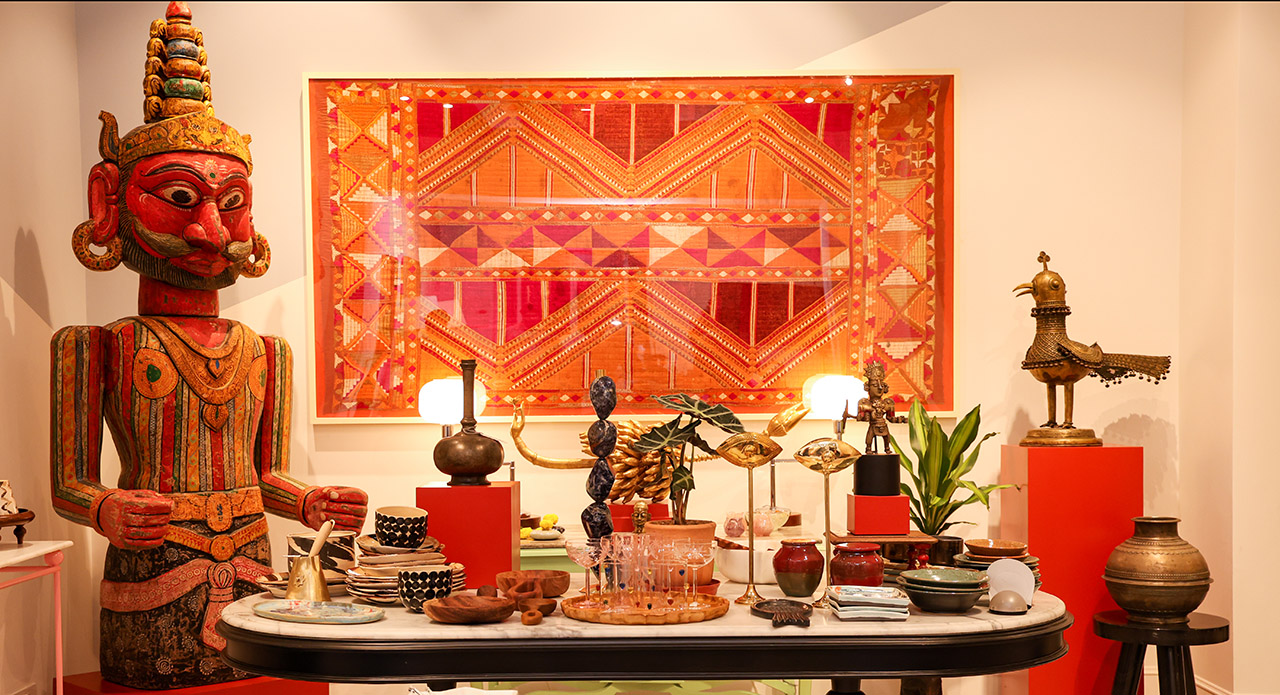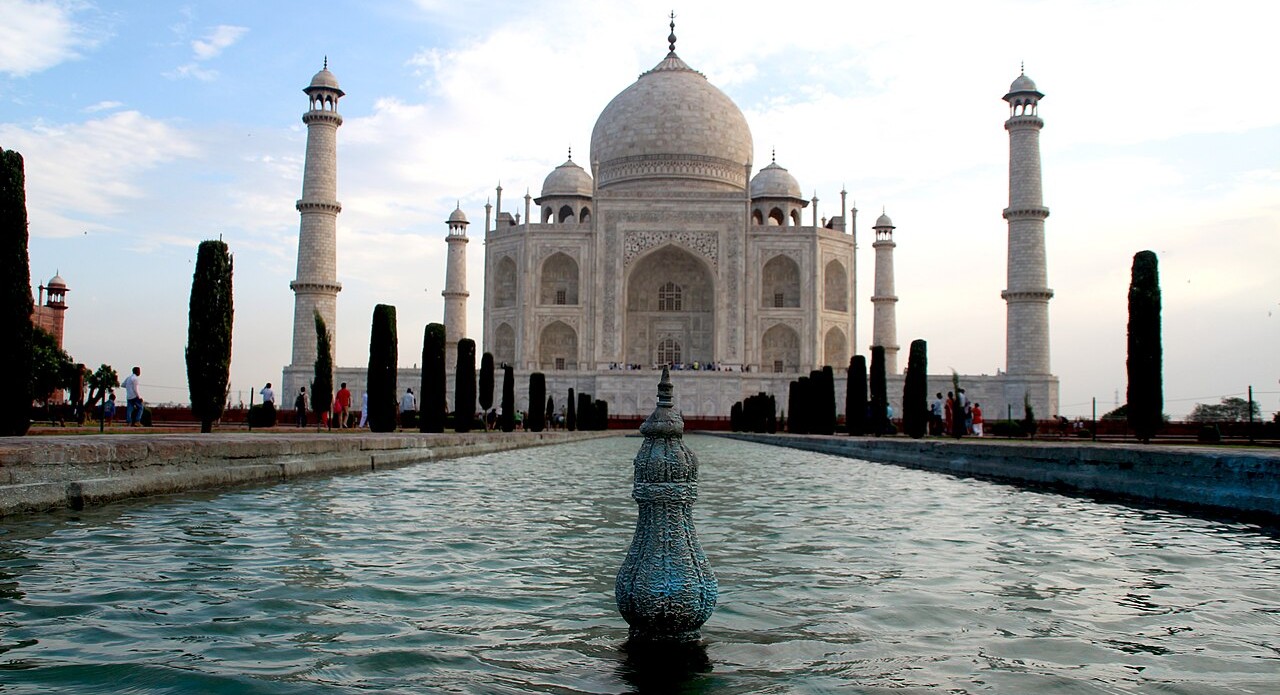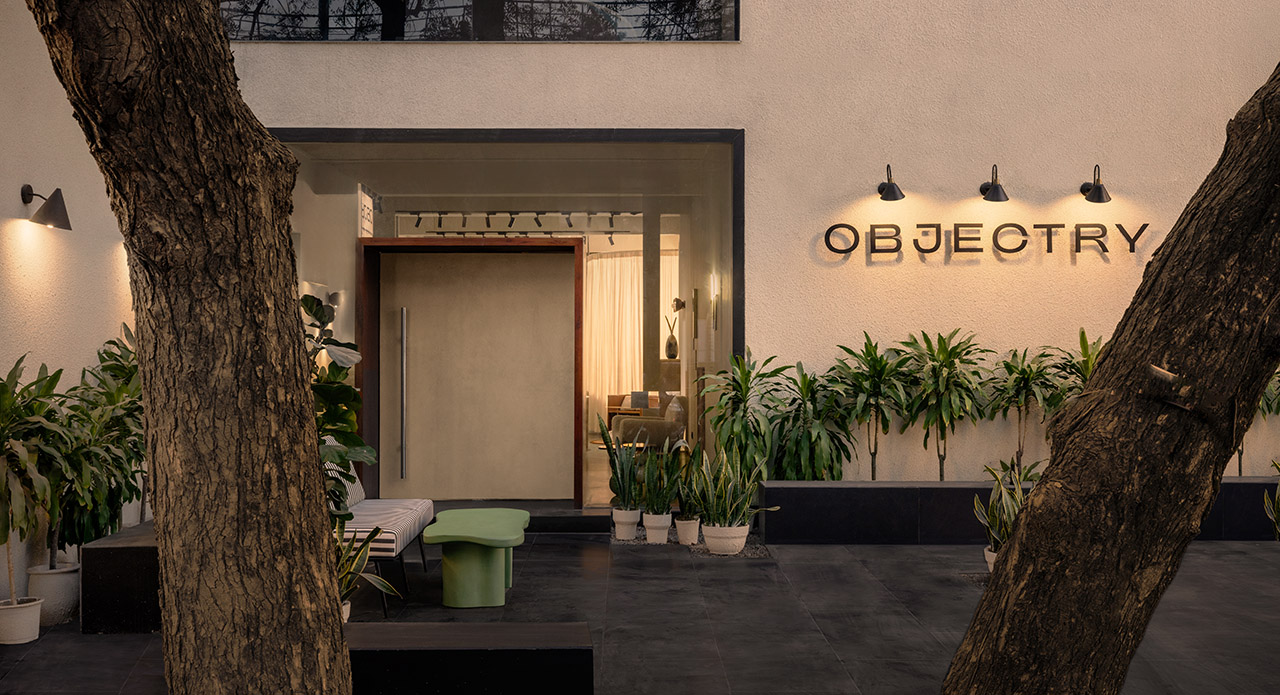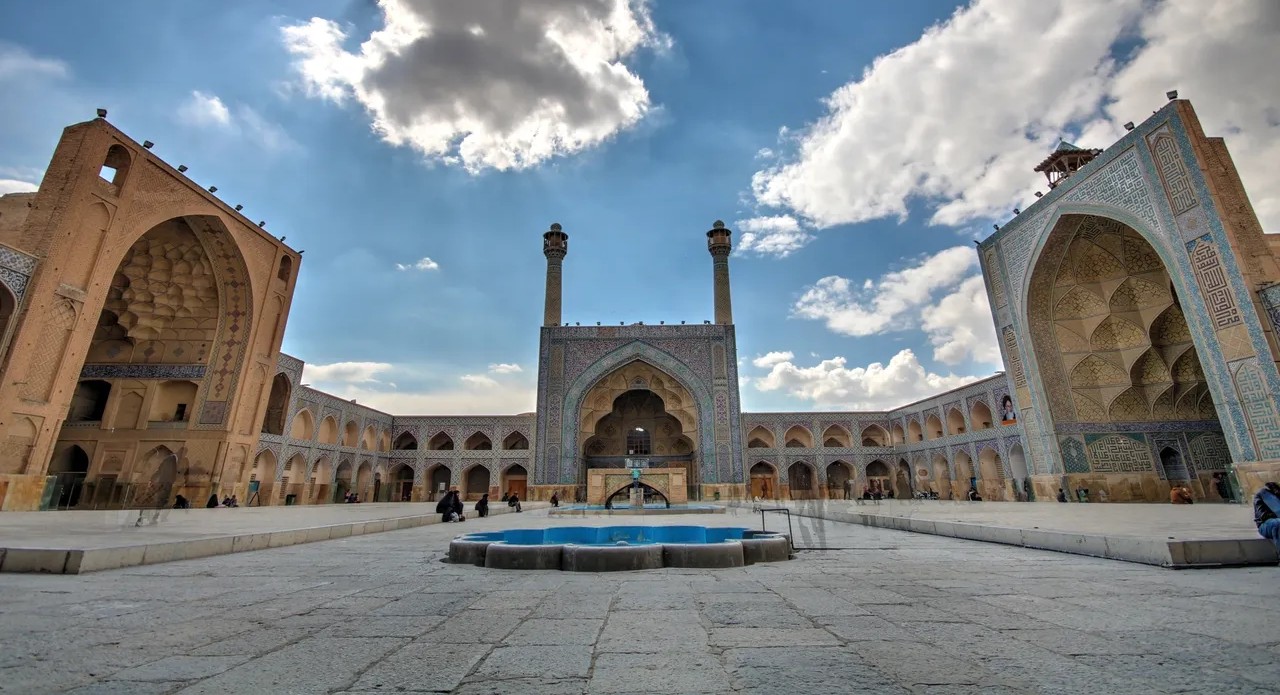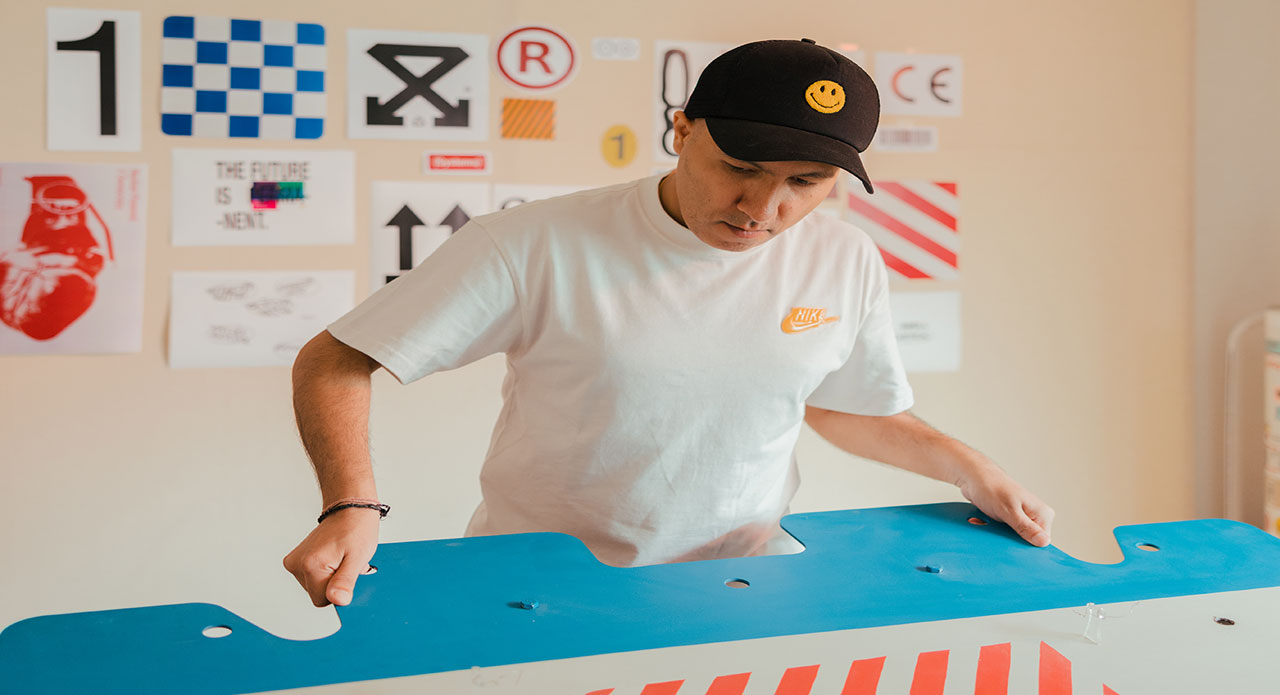Jaipur Rugs, one of the largest manufacturers of hand-knotted carpets, known for its work in ethical luxury and handmade craftsmanship with artisans, recently announced the launch of Dreamers — a bold, genre-defying art collection created in collaboration with acclaimed textile artist Gurjeet Singh. Chandigarh-based artist Gurjeet Singh weaves forgotten materials into stories that reflect his journey of identity, resilience, and queerness. His work is more than just art—it’s an emotional connection, a conversation between past and present. Through each piece, Singh invites you to feel the raw truths of his world, captured in every thread. According to him, “Artistic expression is deeply intertwined with emotion.”
Dreamers is more than a collection of rugs and wall art—it is a movement stitched together by emotion, memory, identity, and the lived experiences of India’s rural artisans. Rooted in villages across Rajasthan and echoing within the walls of Jaipur Jail, Dreamers turns traditional hand-knotting into an act of storytelling. Each piece in the collection emerges from intimate conversations, hushed moments shared over looms, and the emotional landscapes of those too often left unseen. Together, Jaipur Rugs and Gurjeet Singh have created a body of work that weaves together personal truths with bold visual language—daring viewers to feel, not just admire.

A glance at the collection
Dreamers is a collection at the intersection of emotion, memory, and identity —woven through the lived experiences of our rural artisans. Known for his deeply personal and genre-defying textile sculptures, Gurjeet Singh steps into the artisans’ world, not as an observer, but as a witness.
This collection of artistic rugs and wall art is not a showcase — it’s a shared confession. Through hushed meals, glances exchanged in loom rooms, and stories woven between lines of tradition and resistance, Gurjeet Singh maps an invisible geography: identity, gender, class, and above all, the yearning to be seen. Crafted with hand-knotting traditions and contemporary abstraction, each piece in this collection channels unspoken dreams and the resilience buried in the routine of rural artisans.
In Dreamers, art becomes a bridge between craft and contemplation, between the visible and the veiled. The collection calls not for admiration, but recognition. To honour the humanity of its makers. To hear the longing between the knots. And to remember: what lies beneath is often what holds everything together.
Craft as Confession
The artworks in Dreamers span themes of gender, caste, queerness, and generational trauma. Through surreal, abstract, and emotionally raw visuals, the collection offers a deeply layered view into the worlds of those who live between tradition and transformation.
Bahu Mukhiya
Bahu Mukhiya reveals the fractured roles rural women must play—praising, surviving, and suppressing their own truths under societal expectations. Handwoven in bold pink, this abstract wall art voices the quiet turmoil of duality. Inspired by museum artefacts and village conversations, Gurjeet parallels the many “faces” people wear—judging, praising, and shifting with convenience. Created by artisans who express their life experiences in every knot, Bahu Mukhiya becomes a tapestry of shifting identities where freedom, hypocrisy, and hope collide.
Artisan – Pushpa
Provenance – Aager, Rajasthan
Number of Knots – 331776
Time Spent on the Loom – 60 Days

The Portraits of Boogli and Her Mother
The Portraits of Boogli and Her Mother tenderly reflect the quiet strength of women denied the freedom to dream, and the generational friction between duty and defiance. This powerful wall art captures an emotional moment between a daughter and her mother. One looks forward with hope, the other carries the weight of a life shaped by duty. The artwork honors the quiet strength of women who were never taught to dream for themselves. With rich colors and layered emotions, this portrait invites you to feel their bond, their silence, and the resilience passed down through generations.
Artisans – Godhi and Boogli
Provenance – Aspura, Rajasthan
Number of Knots – 283808
Time Spent on the Loom – 145 Day

I Like to Wear Both
I Like to Wear Both boldly celebrates gender fluidity and self-expression through surreal imagery, challenging the norms that bind identity.A donkey in heels and juttis stands at the heart of this surreal scene— this wall art is playful yet profound. Gurjeet Singh uses this image to celebrate gender fluidity and freedom to choose. Surrounding it, faceless birds and a lifeless pond speak of polluted minds and moral decay. Crafted with quiet rebellion, this rug invites us to reflect on identity, hypocrisy, and the cost of judgment.
Artisan – Nishrat
Provenance – Amer, Rajasthan
Number of Knots – 497664
Time Spent on the Loom – 82 Days

Black Sun
Black Sun created after the Indian High Court’s rejection of same-sex marriage, becomes a haunting symbol of dimmed identity and deferred hope. A sun that doesn’t shine. This wall art figure radiates not light, but darkness—a contradiction that speaks volumes. Gurjeet Singh created Black Sun during a time of emotional intensity, shaped by the pain he witnessed at Jaipur Jail and the Indian High Court’s rejection of same-sex marriage. The figure becomes a haunting symbol of hope deferred, of identity dimmed but not extinguished. Its dark palette and coarse textures express a raw, unfiltered grief—posing a question that lingers: When will they see the light? When will they be free to dream again?
Artisan – Pinki
Provenance – Kushal Singh Ki Dhani, Rajasthan
Number of Knots – 221184
Time Spent on the Loom – 83 Days

Works such as “I Want to Go Home” and “The Heaviness Within” were born in Jaipur Jail, shaped by the emotional echoes of confinement, and offer a raw portrait of pain, resilience, and longing for liberation.
I Want to Go Home
Born from the silences of prison walls, this asymmetrical wall art carries the ache of longing. Houses float like lost memories, some whole, some broken—mirroring fractured families and forgotten ties. The muted hues reflect the Jaipur Jail inmates’ subdued spirits, while teardrop plants weep silently. Amid sorrow, moments of dance, play, and quiet love bloom, reminding us that dreams of home and freedom persist even in confinement.
Artisan – Rais
Provenance – Amer, Rajasthan
Number of Knots – 497664
Time Spent on the Loom – 83 Days

The Heaviness Within (Kuch Aisa Jo Samjhaya Na Ja Sake)
A quiet figure, sitting still, surrounded by emptiness—this artwork reflects the emotional weight carried by those behind bars. Inspired by sketches made by inmates in Jaipur’s prison, the image shows not just a body, but a heavy heart. The posture speaks of surrender and lost dreams, while the open hands suggest a quiet hope. This piece is a reminder of the pain we cannot always see and the voices we too often ignore.
Artisan – Pinki
Provenance – Kushal Singh Ki Dhani, Rajasthan
Number of Knots – 221184
Time Spent on the Loom – 83 Days

These are not decorative objects—they are visual essays. Each piece is meticulously crafted using ancient hand-knotting techniques, with knot counts reaching over 600,000 knots, and production timelines spanning up to 145 days. Every artwork carries the signature of its artisan—centering creators like Pushpa, Pinki, Boogli, Rais, Nishrat, and Gajanand as central storytellers, not silent technicians.
Reimagining the Role of Artisan: From Hands to Voices
Where most collaborations position artisans as nameless contributors, Dreamers insists on visibility. Artisans are honored as co-creators, each piece infused with their individual experiences, thoughts, and truths. In this collection, weaving becomes an act of authorship—where trauma, silence, and joy are given space to exist without translation.
“This is what the future of handmade craft must look like,” says Rutvi Chaudhary, Director of Jaipur Rugs. “It’s no longer just about the object—it’s about dignity, ownership, and the storytelling power of those whose voices have long gone unheard.”
The Dreamers collection also includes sculptural portrait heads, created from fire-damaged rugs that were once destined for disposal. Transformed into monumental forms using remnant materials, folk motifs, beads, and buttons, these heads tell stories of survival, environmental responsibility, and emotional reinvention—demonstrating that beauty, like people, often rises from the ashes.
A New Language of Luxury: Emotional, Ethical, Human
With Dreamers, Jaipur Rugs continues to redefine what luxury means—not perfection, but purpose. Not distance, but depth. These artworks challenge viewers to confront not only the aesthetic, but the emotional labor, the humanity, and the suppressed voices that shape each piece.
This is not just a call for admiration—it is a call for recognition. To see the invisible. To hear the longing between the knots. To remember that what lies beneath is what truly holds everything together.





